The Kokoda Track is the symbol of World War II for Australians. This book takes readers up that tortuous track and into battle with the young men who fought there, following in the footsteps of heroes and villains as they climb the endless mountain ranges, dig into defend, charge into battle or begin the long, desperate and bloody trek to safety. Here can also be found the perspective of the Japanese troops and the extraordinary local people who the Diggers called 'angels'.
-

Kokoda: Peter Fitzsimons
$12.00 -
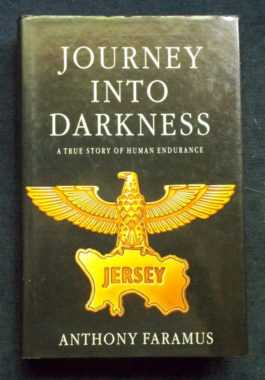 By 194o, the isle of Jersey was well and truly under the Nazi jackboot. The legitimate authorities collaborated with the occupying power. For islander Anthony Faramus, this would have horrific consequences. When the local police reported him to the Germs for possession of a British leaflet, Faramus was jailed for one month. Then the Jersey authorities prosecuted him for defrauding his employer of 90 Occupational Marks. His employer was the collaborationist state, which put him to work in a motel commandeered by the Germans. This time he got six months' hard labour. Shortly after his release, Faramus was sent to Occupied France as a political prisoner. The authorities had sent young Anthony Faramus on the first stage of a journey into the dark heart of Nazi tyranny - but to begin with, imprisonment in France's Fort de R9omainville was surprisingly enjoyable, with fellow prisoners, men and women, from a fascinating cross-section of society. But after Romainville came selections... transports...and the death camps of Buchenwald and Mauthausen...
By 194o, the isle of Jersey was well and truly under the Nazi jackboot. The legitimate authorities collaborated with the occupying power. For islander Anthony Faramus, this would have horrific consequences. When the local police reported him to the Germs for possession of a British leaflet, Faramus was jailed for one month. Then the Jersey authorities prosecuted him for defrauding his employer of 90 Occupational Marks. His employer was the collaborationist state, which put him to work in a motel commandeered by the Germans. This time he got six months' hard labour. Shortly after his release, Faramus was sent to Occupied France as a political prisoner. The authorities had sent young Anthony Faramus on the first stage of a journey into the dark heart of Nazi tyranny - but to begin with, imprisonment in France's Fort de R9omainville was surprisingly enjoyable, with fellow prisoners, men and women, from a fascinating cross-section of society. But after Romainville came selections... transports...and the death camps of Buchenwald and Mauthausen... -
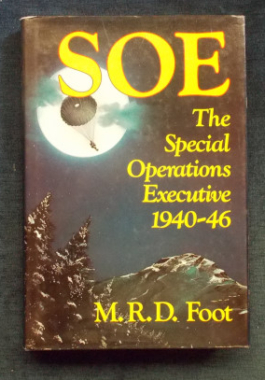
S.O.E. was a small, tough British secret service dirty-tricks department. Its job was to support and stimulate resistance in occupied countries. It was wound up after the war. Its total strength was never more than 10,000 men and 3,200 women, over a third of them secret agents - it exercised vast influence on the war all over the world. This is a readable volume on how S.O.E was created and run, the calibre of the men and women involved, what tools they used and how, when and where they used them, where they did well - and where they did badly. Illustrated with black and white photographs.
-
 The story of the famous Polish Squadron stationed in Britain in Word War II. Their hearts are with their families and loved ones at home but their fears and feelings must be put aside when the German offensive intensifies and they are called up to defend Britain from Hitler's Luftwaffe. Also starring Cara Theobald, Anna Prus and Andrew Woodall.
The story of the famous Polish Squadron stationed in Britain in Word War II. Their hearts are with their families and loved ones at home but their fears and feelings must be put aside when the German offensive intensifies and they are called up to defend Britain from Hitler's Luftwaffe. Also starring Cara Theobald, Anna Prus and Andrew Woodall. -

Munda Trail: Eric Hammel
$10.00The Solomon Island archipelago stretches in a roughly east-west direction from New Guinea to San Cristobal. For the Imperial Japanese forces in 1942, it was a natural highway into the South Pacific. When checked at Guadalcanal, these forces realized they had moved east too quickly, and that their defeat was caused in part by inadequate air bases between the front and their head-quarters at Rabaul, more than six hundred miles away. As the last Japanese battalions were wrecking themselves against the Marine defensive perimeter on Guadalcanal, the decision was made to build the Munda airfield on New Georgia, right in the middle of the Solomons chain. This is the dramatic, harrowing story of green American soldiers encountering for the first time impenetrable swamps, solid rain forests, invisible coconut-log pillboxes, tenacious snipers tied into trees, torren-tial tropical rains, counterattack by enemy aircraft and naval guns, and the logistical nightmare of living and moving in endless mud. -
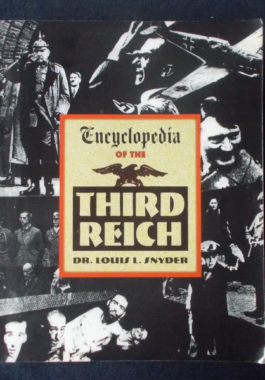 Regarded as a definitive selection of historical information covering all the important people of the time (Resistance members and Nazis); military operations; concepts; organisations of the era as well as those regarded as having been influential to the Nazi ideology. There is a chronology of every important date in the history of the Third Reich from the fall of the Weimar Republic to the end of World War II; a bibliography of pertinent books and articles; essays on art, architecture, film, theater, music, sports, religion, and education; documents such as Hitler's Last Will and his Political Testament and over 200 period photos and drawings.
Regarded as a definitive selection of historical information covering all the important people of the time (Resistance members and Nazis); military operations; concepts; organisations of the era as well as those regarded as having been influential to the Nazi ideology. There is a chronology of every important date in the history of the Third Reich from the fall of the Weimar Republic to the end of World War II; a bibliography of pertinent books and articles; essays on art, architecture, film, theater, music, sports, religion, and education; documents such as Hitler's Last Will and his Political Testament and over 200 period photos and drawings. -

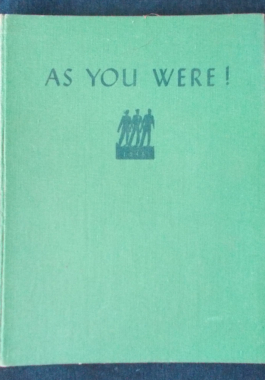 A Cavalcade of Events with The Australian Services from 1788 to 1946. Articles and notes; art and jokes; poetry and cartoons... from the servicemen - and even some of the women - who were there. This is no dry history of battles and dates - it's a memorial to all those fallen in war. Just some of the items in this volume: The Blood-bath at Cowra, E.V. Timms; When Sydney Fought A Zeppelin, 'Matelot'; Bless 'Em All, Biddy Moriarty (Australian Red Cross); Stout Hearts That Never Failed, Ion Idriess; A Service Girl In Japan, A.J. Poppins; and much more, together with art and photographs in black and white and colour - and of course, some typical Australian irreverent cartoons.
A Cavalcade of Events with The Australian Services from 1788 to 1946. Articles and notes; art and jokes; poetry and cartoons... from the servicemen - and even some of the women - who were there. This is no dry history of battles and dates - it's a memorial to all those fallen in war. Just some of the items in this volume: The Blood-bath at Cowra, E.V. Timms; When Sydney Fought A Zeppelin, 'Matelot'; Bless 'Em All, Biddy Moriarty (Australian Red Cross); Stout Hearts That Never Failed, Ion Idriess; A Service Girl In Japan, A.J. Poppins; and much more, together with art and photographs in black and white and colour - and of course, some typical Australian irreverent cartoons. -
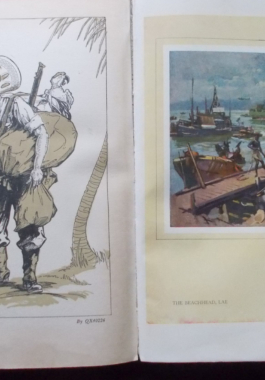
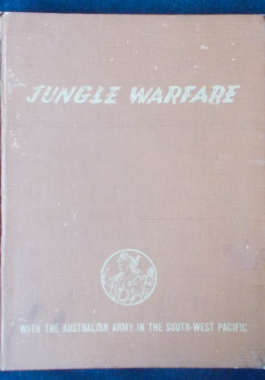
Published for the Australian Military Forces by the Australian War Memorial, Canberra, in 1944. Full of sketches, poems, colour plates and photographs, cartoons and jokes, as well as those fabulous yarns that Aussies can tell so well - and all by the service personnel who were engaged in the South West Pacific during World War II. Contributors are identified only by their service numbers...so your grandfather or great grandfather may be among the authors. Here we do not find battle statistics, plans or generals - just the down to earth Australian Diggers.
-
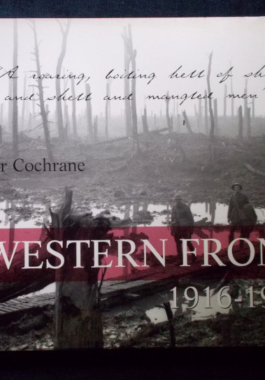 A fascinating, unsettling and unforgettable view of one of the most compelling events in modern history. For all the significance attached to the doomed heroism at Gallipoli, the Western Front was the single greatest wartime tragedy that elicited the greatest sacrifice. Of the 61,720 who died in the course of the war, 46,319 were lost at the Western Front. In a matter of weeks, more Australians were slain in or or two battles than in the entire eight months at Gallipoli. Those terrible years, 1916 to 1918, represent the whole panoply of modern warfare. This is an examination of the record of official and unofficial images in unexpected ways. It looks at the major battles of the campaign, the grim conditions endured by the soldiers, the workers of the massive support system, the valiant efforts of stretcher-bearers and medical workers and, finally, the run of victories under Monash in which Australian soldiers distinguished themselves above and beyond their numerical presence. Illustrated with black and white photographs.
A fascinating, unsettling and unforgettable view of one of the most compelling events in modern history. For all the significance attached to the doomed heroism at Gallipoli, the Western Front was the single greatest wartime tragedy that elicited the greatest sacrifice. Of the 61,720 who died in the course of the war, 46,319 were lost at the Western Front. In a matter of weeks, more Australians were slain in or or two battles than in the entire eight months at Gallipoli. Those terrible years, 1916 to 1918, represent the whole panoply of modern warfare. This is an examination of the record of official and unofficial images in unexpected ways. It looks at the major battles of the campaign, the grim conditions endured by the soldiers, the workers of the massive support system, the valiant efforts of stretcher-bearers and medical workers and, finally, the run of victories under Monash in which Australian soldiers distinguished themselves above and beyond their numerical presence. Illustrated with black and white photographs.


